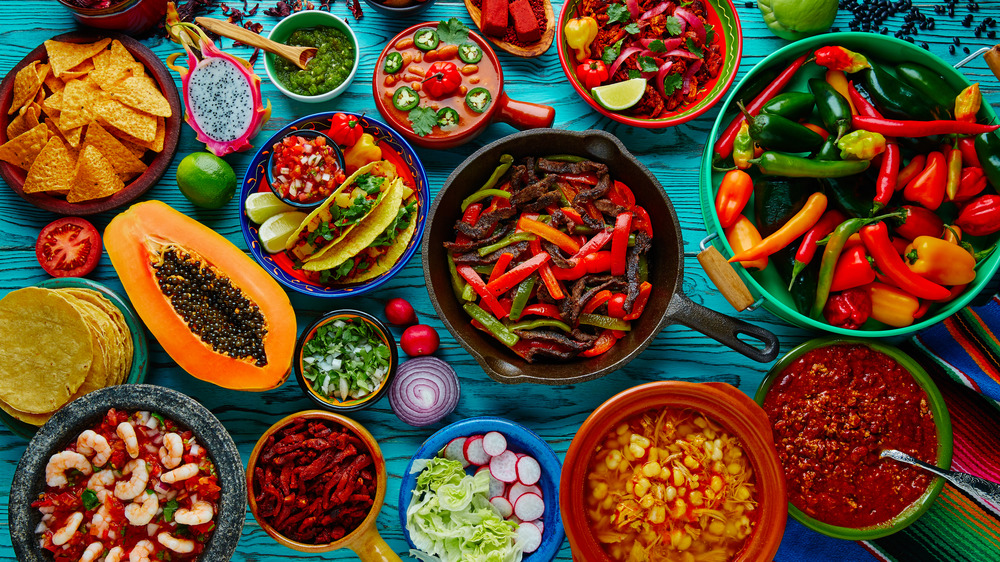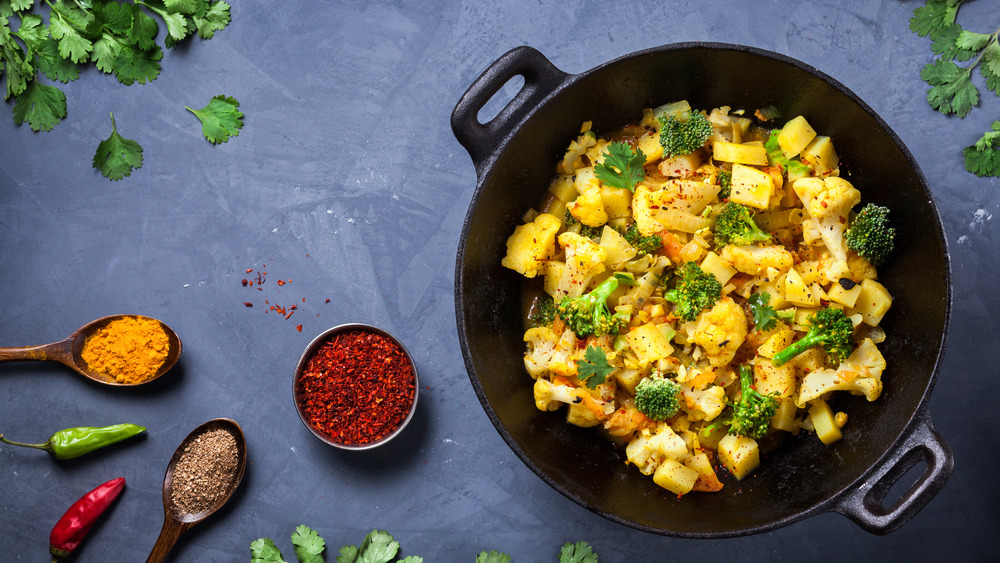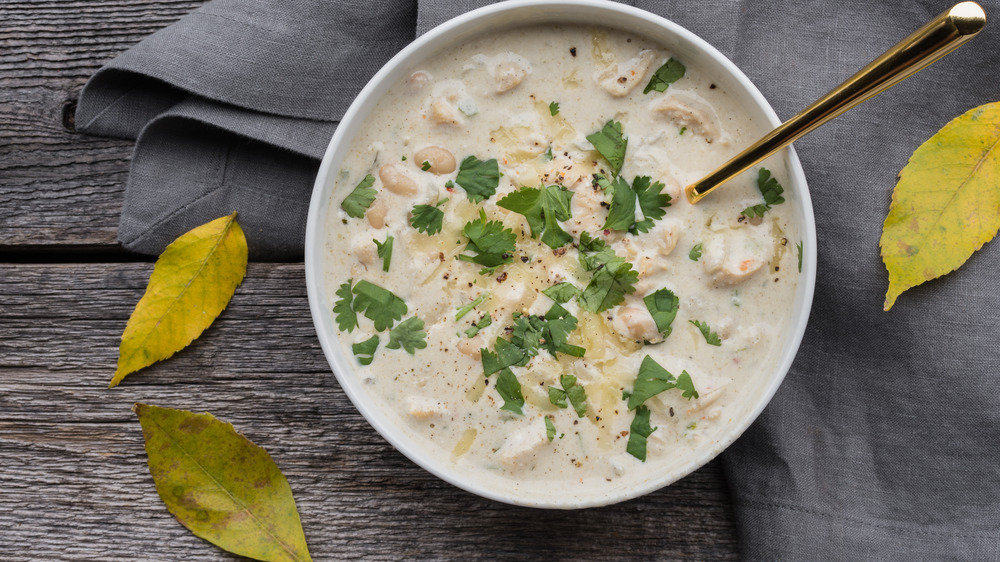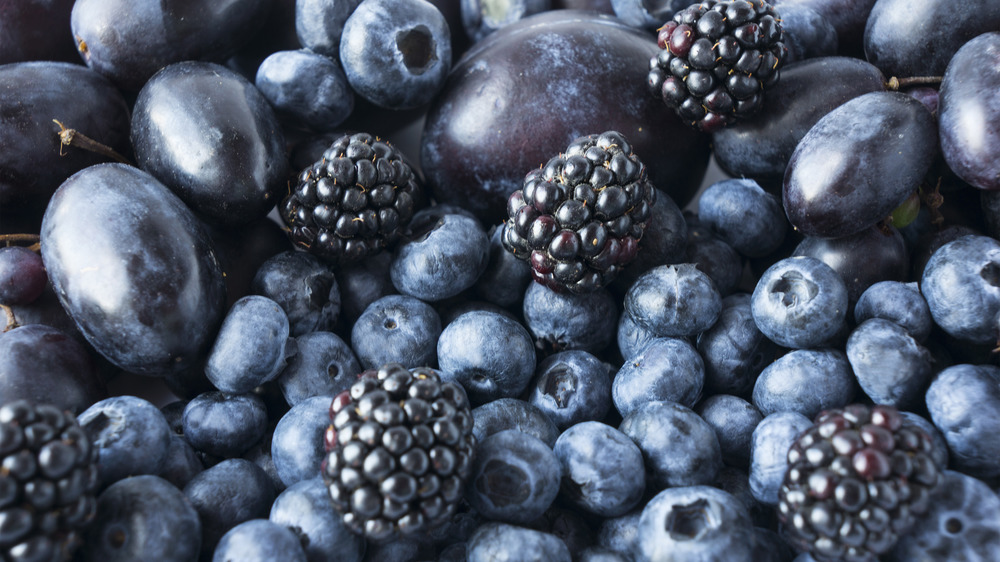The Surprising Way Food Color Affects How You Eat
There's a reason that Instagram is full of food. Homo sapiens are quite literally capable of feasting with our eyes. We're still salivating, for example, over Food & Wine culinary director Justin Chapple's bright red (clearly fresh and juicy) tomatoes on his bacon-wrapped burger. We delight in daydreaming about food influencer @whatsgabycookin's fall farmer's market salad, chock full with vibrant pomegranate seeds, glowing persimmons, and snow-white (obviously deliciously tangy) goat cheese. And we'd be lying if we told you that Jamie Oliver's glistening, clementine-roasted carrots aren't peculiarly appealing.
After talking to food processing company ADM's Senior Director for Colors, Emina Goodman, we know that's no mistake. As Goodman explained to Mashed, "Food colors and flavors go hand-in-hand." It's not just that "color plays a vital role in delighting the senses, differentiating flavor expectations and aiding in taste perceptions." It's also about feelings. Says Goodman, "Like taste and smell, people also tend to connect with color deeply on an emotional level." It didn't take long for Goodman to let us in on some trade secrets.
Cook with this color to evoke exploration
What's the number one color to consider for your upcoming recipes? Yellow. Emina Goodman told Mashed that "yellow shades [in food] can help impart feelings of naturalness and comfort. Yellow can also be an uplifting color linked to health perceptions as well as energy." Curry, corn, rice, soups, "and even beer," says Goodman, are prime examples of such naturally-occurring hues.
Yellow foods aren't only uplifting and comforting, they also have the power to take us on mental journeys. "Yellow is often equated with exotic flavors and global cuisines," Goodman says, pointing to mango, as an example of a fruit "associated with warm, tropical regions," and to turmeric as an "earthy flavor" that is "often linked with Indian and Middle Eastern fare." These associations are particularly important in 2020. "When travel has been restricted and most of the world has operated under some form of lockdown, using bright colors like yellow in our cooking can help to evoke or mimic the emotional experience of global travel," Goodman suggested.
To enhance the feeling of exploration through food, consider thinking about the "specificity of origin in foods and flavors." Doing so, Goodman explained, "can also drive home exploratory feelings through travel." A prime example of this? Sicilian lemon.
Cook with this color to evoke stability
If you're a homebody, or in serious need of some comfort food, go gray. "Gray is an elemental hue, the color of stones and rocks and pebbles on the beach," Goodman said. "These sturdy parts of nature provide a sense of hardiness and durability – a firm foundation for people to hold onto."
Gray may not seem like a common color in foods, but it's actually more prevalent than you might expect. Goodman suggests "foods like mushrooms, which often have a grey tone, are seen as a filling and hearty alternative to traditional animal proteins." She also pointed Mashed in the direction of "potatoes, dips and spreads, white beans, milks, yogurts, white chocolate, and sugar cookies."
To explore the comforting power of gray foods, look, specifically for lighter shades of the color. These shades, per Goodman, "may produce interesting comforting options associated with a way to reset and renew." Is the irresistibility of Ina Garten's Potato Fennel Gratin suddenly making more sense to you? Yeah, you're not the only one.
Cook with this color for tranquility
Seeking out the best colors to cook with to keep calm and carry on? Try blue. "Blue tends to be a steadfast and a serious color," Goodman told Mashed, "although it can also be one of thoughtful renewal." Goodman added that "blue can be a very relaxing and soothing color. It acts more as a suppressant and can remind you of the beach and ocean waves."
Scratching your head to think about where to find blues for your cooking adventures? ADM, says Goodman, often uses Huito fruit from Peru's Amazon region to achieve its blue hues. If Huito fruit isn't readily available to you, we'd imagine that blueberries or even blue potatoes and blue corn would work just fine. During the summer months, why not find yourself an ice cream parlor that serves Blue Moon ice cream? We've heard that most of the American Midwest can't live without it.



